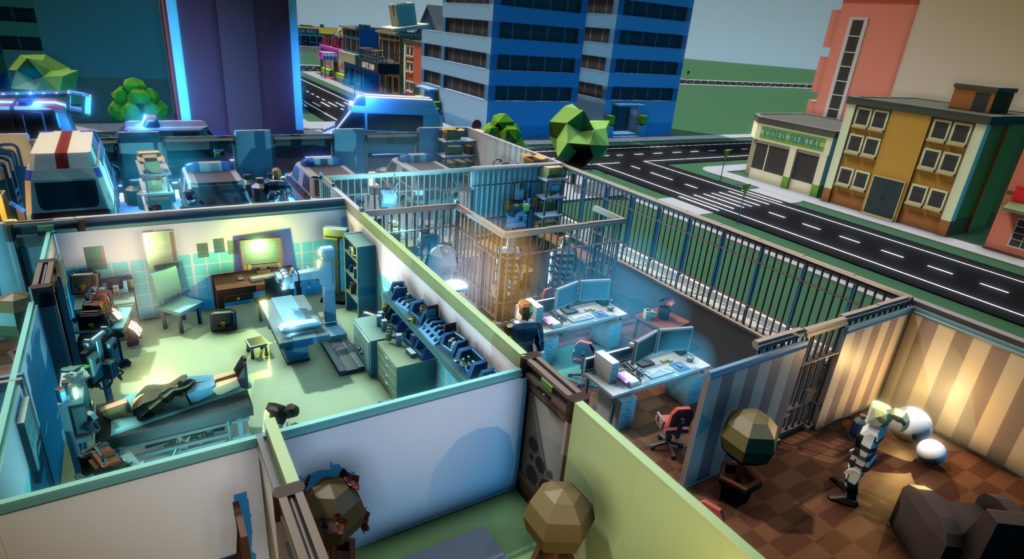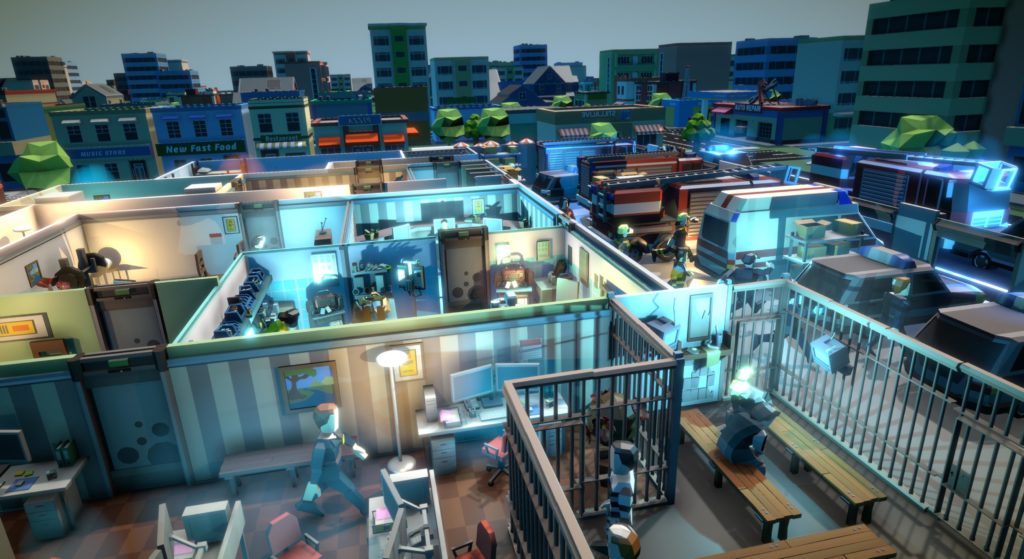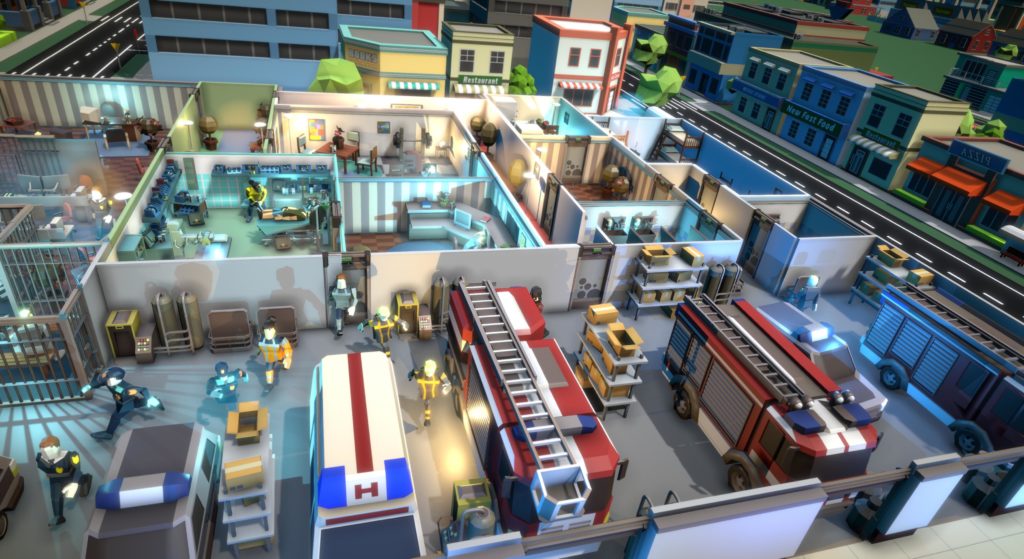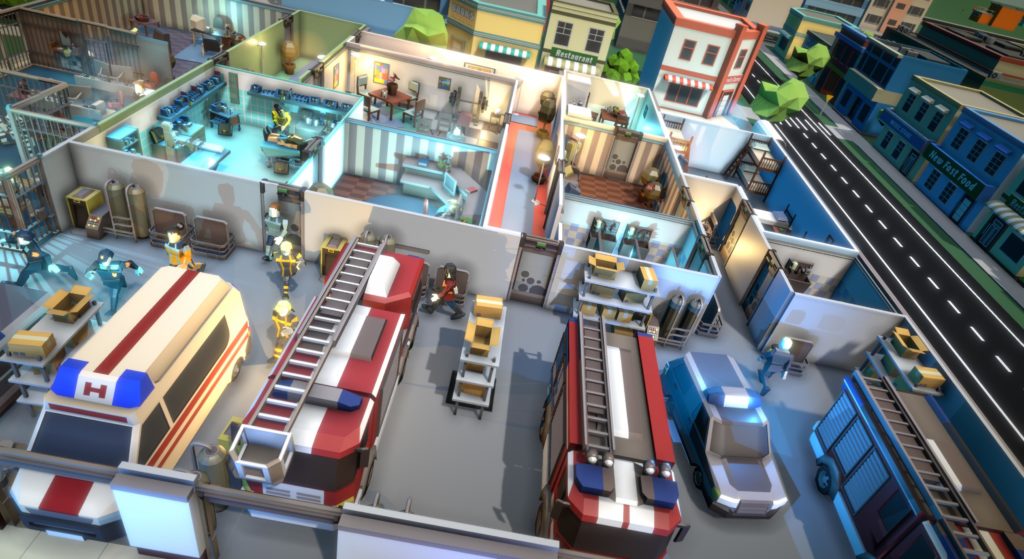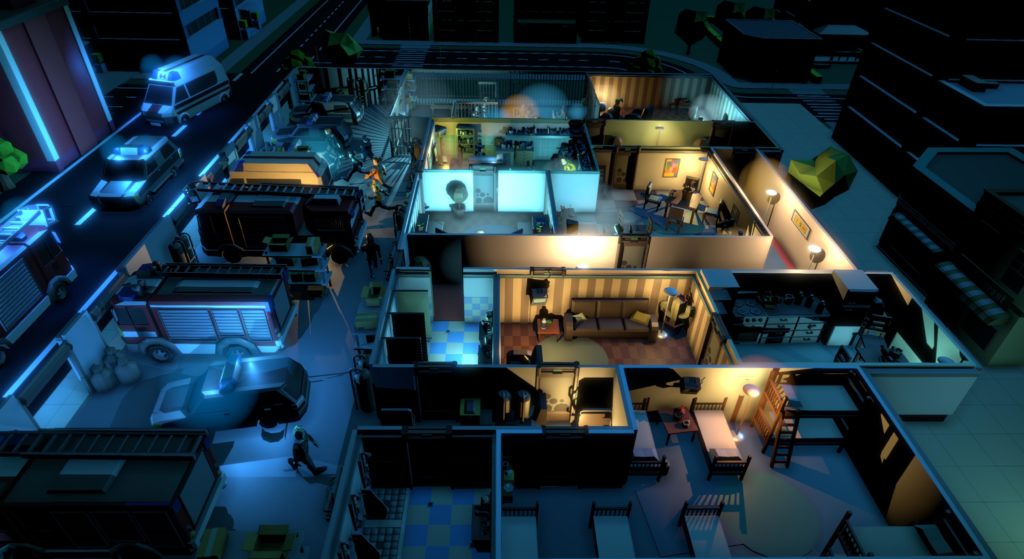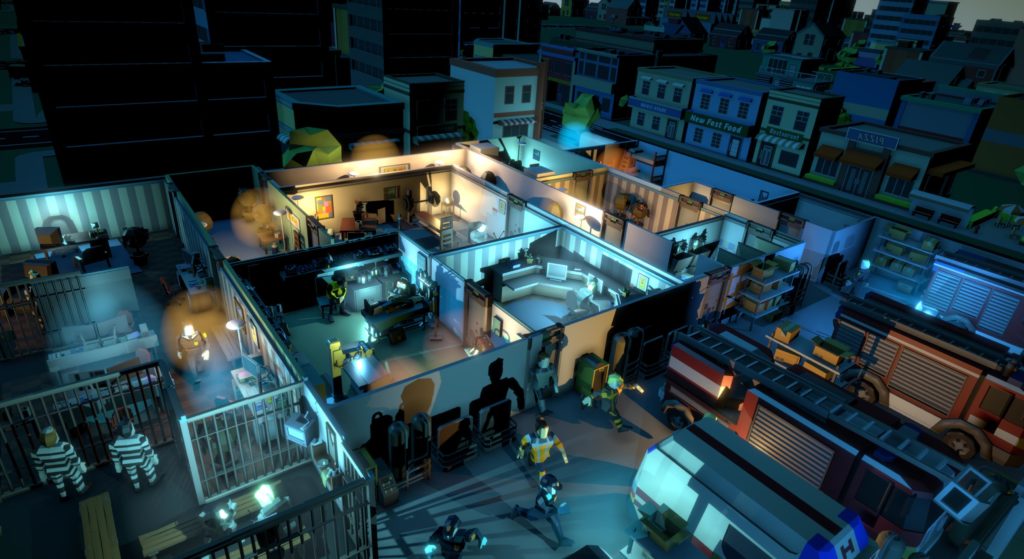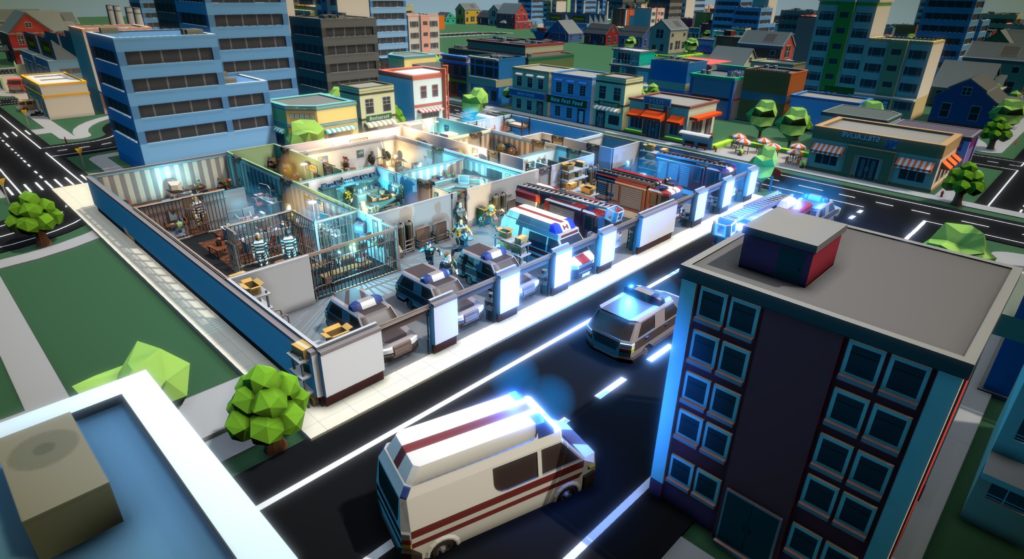Developer: stillalive studios | Publisher: Aerosoft GmbH || Overall: 8.0/10
If you’ve ever thought you wanted to take a crack at running your own multi-department government agency, look no further than Rescue HQ – The Tycoon. Stuck somewhere between the seedy privatization of emergency services and wholesome government corruption, you’ll operate and collect money for performing noble services to the community. Frankly, you’re not doing anything illegal, but the focus on the game is really to make money instead of helping people, after all.
The first thing you’ll notice when starting the first scenario is the blatantly tongue-in-cheek humor of your tutorial guide, the Mayor, talking about how you can make a ton of money. There’s some very strange non sequiturs in the dialogue that can catch you off-guard (which are genuinely funny), but it feels misplaced for this game. Despite that, the tutorial is actually a finely crafted experience that slowly introduces the elements the game has to offer and eventually builds into a full game experience without having to “restart” the game. There are a lot of different things to buy and build and finding out the best combination and configuration of all of these elements is the main challenge of the game.
Other than the building aspect, the main gameplay comes in the form of managing emergencies/missions. These missions require you to use your resources and staff, with the rewards being payouts of currency and reputation. Reputation is a capped currency that is required to unlock more elaborate items. As each in-game week passes by, this cap is increased, but you’ll need even more of it to unlock advanced stuff. The emergencies basically play out like those mobile games that you send things out for 5 hours, come back, collect rewards, and then send them out again. Except here, you get flooded with these missions and they tend to only take minutes to complete. The goal is to complete the missions with the highest amount of success rate as possible, but how you get there is entirely reliant on how you are managing just about everything else.
Missions will slowly ramp up, requiring you to keep pace with the growth by hiring more staff, building more resources, and spending more time making decisions on the loadout screens. While these missions are fun to fulfill when they are less complex, the end-game emergencies are a pain when you have to click 10/15/20 times to get to a worthwhile percentage before sending it out. There really needed to be a way to “autofill” with your staff/resources in the best way possible so you can clear these out quicker. When you have 3 or 4 to do at any given time, it can be an artificially lengthening experience.
Eventually, you earn enough reputation to pay off emergencies you don’t want to do and have them go away. Completing emergencies avoids negatively affecting your rating with City Hall, which is the largest source of income per week, but you get money/reputation from completing events yourself, so you are ceding that willfully. There are also day/night shifts where everyone swaps out for a fresh worker. There are other miscellaneous buffs and debuffs your staff can acquire, and as they earn more experience they also become stronger. All of this is fairly fine-tuned and polished; there’s a good experience overall when it comes to the gameplay.
Each department (Fire, Police, and Medical) has their own unique throughput for earning money, and it’s easy to focus more on one or the other. However, as emergencies are random there is less impetus to do anything but have balanced hiring across all three. Police require a lot of extra hands to operate the “paperwork” that is generated, Firefighters require a lot of extra equipment and staff for missions, and Medical has all sorts of different machines to diagnose and treat patients.
The graphics look pretty “computer generic” at first, but the art is actually pretty detailed. While you don’t exactly make any personal connections with your staff due to their generic looks (and having a swarm of them at all times) you won’t exactly get attached to any particular character. The worst part about the game visually is the user interface. There are some issues with text being cut off, things not selecting or deselecting when you mean for it to be, among other things. They clearly needed to go over this again with a fine-toothed comb and figure out what the hell is going on here. Otherwise, I was able to easily find my away around most things and it wasn’t a pain to build what I wanted to. After 10 hours of gameplay, I found out you could actually rotate the camera; I may have missed this in the tutorial, but at this point I’m basically done after about 22 hours of gameplay. There are updates planned, so it may be worth diving back in at some point.
In the end, the game is a lot of fun and an interesting challenge. Once you stabilize your business model, you’re pretty much only going to need to accomplish the emergencies with as much efficiency and as high rate of success as possible. The biggest gripe about the game is how many scenarios are available — there are only five. A game like this should easily have at least 15 to 20, some emphasizing particular aspects of the gameplay to present new challenges. As is, you’re always going to be focused on all three departments equally and just trying to survive until the end of the scenario, which can take a pretty long time to complete.



